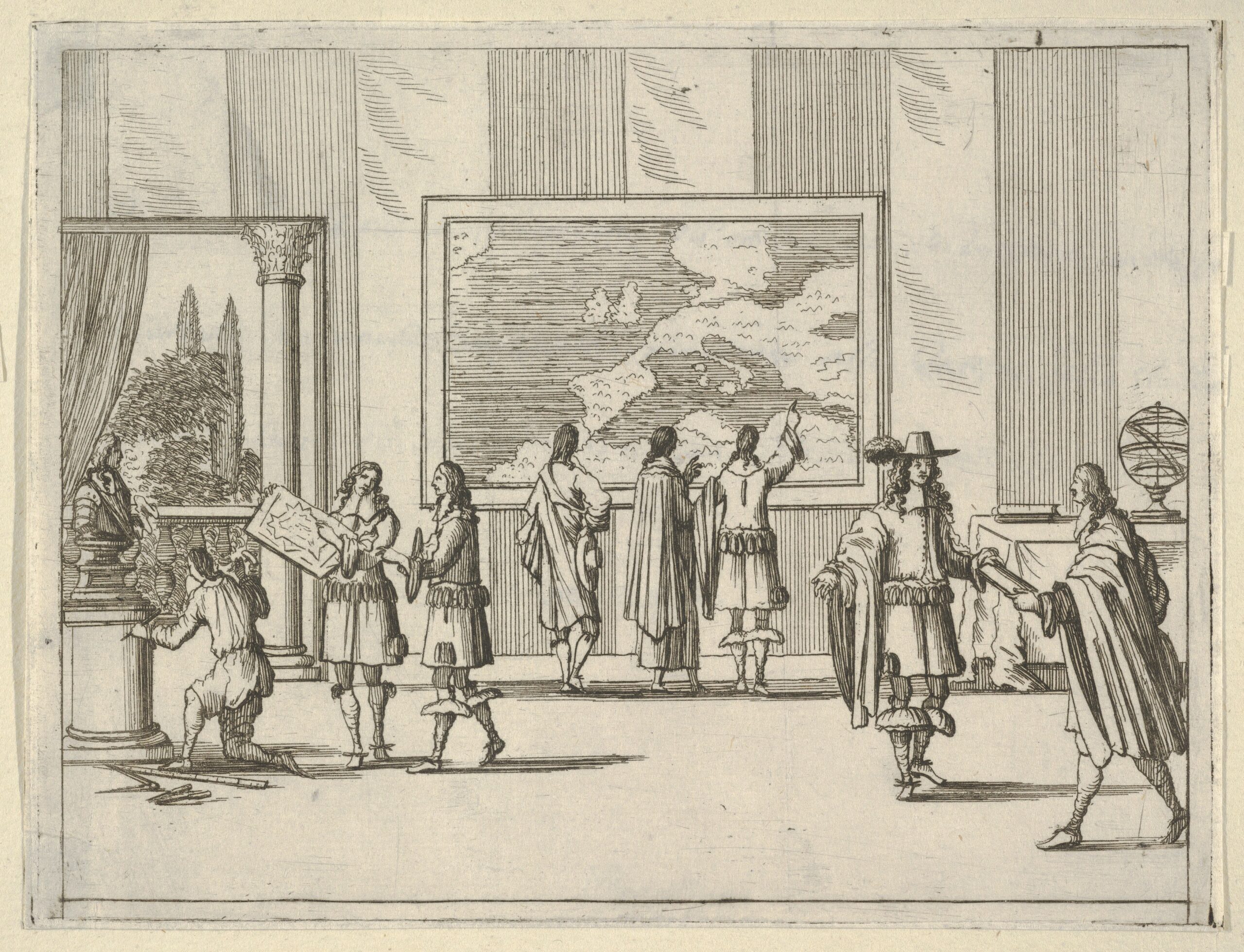On the death of Duke Francesco I, the Jesuit father Domenico Gamberti was charged by Alfonso IV to write a biography of the sovereign. In the first months of 1659, a booklet of about forty pages was published in which the author recounts the unfolding of the solemn funeral, describing the decorative devices that evoked the virtues and gestures performed by the Duke. But this first composition left Gamberti very dissatisfied and he immediately set to work to expand and improve the first draft. The second edition, which came out the same year, is recognised as the best editorial product of 17th-century Modenese typography. The work consists of 614 pages richly illustrated by important artists such as Francesco Stringa, who produced the elegant panel with the bust of Francesco I, and Bartolomeo Fenis, who produced the panels with the life scenes and funeral emblems.
Gamberti designed an imposing and exquisitely baroque work befitting the personality of Francesco I, in which the tale of his life moves between episodes from the present and the past of the House of Este where the eulogy of the individual duke is extended to the entire Este lineage. The first full-page incision is designed by Francesco Stringa and executed by the bolognese engraver Lorenzo Tinti: the Duke in the centre of the page is represented by the bust sculpted of him by Bernini. On the base of the sculpture, a woman from behind is engraving the title of the work, at her feet are the palm of martyrdom and a laurel crown, while to the left, a skeleton is about to finish the inscription with the date. The background is a Baroque jubilation filled with fluttering putti holding portraits of Francesco I’s predecessors, tall columns placed on imposing plinths and heavy draperies partly covering them. After the frontispiece (third page) and the prologue, the sumptuous list of ephemeral apparatuses begins, the decoration of the Church of St. Augustine, the catafalque and the explanation of the figures and references.
Through the narration of the virtues that the perfect Christian Prince must possess, the author attributes them to the life and actions of Francesco I, idealising him. His diplomatic and military successes, his nobility, religious sentiment, the construction of new buildings, and the commissioning of works of art are the episodes that exalt the figure of the Duke and are recounted both by Gamberti’s erudite prose and by the important illustrations that accompany the text, set in sumptuous frames full of allegories. The images offer realistic views of the city of Modena or of the interiors of the Palazzi Ducali and the Teatro della Spelta (now lost).







